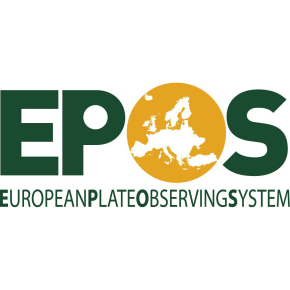
Launch of the European Plate Observing System (EPOS): Earth System Science enters the Big Data era
Wednesday 7 November 2018 officially launches the European Plate Observing System (EPOS) for the pooling and streamlining of data and services of all kinds for the study of our planet. This initiative, for which the CNRS and BRGM are working together with the French Ministry for Higher Education, Research and Innovation, in part aims to better understand the mechanisms behind earthquakes and volcanic eruptions. Developed in line with the principles of open science, EPOS infrastructure will henceforth be a legal entity, in the form of a European Research Infrastructure Consortium (ERIC).
Earth is an active system, the internal dynamics of which generate a continuous series of surface morphological changes in interaction with the atmosphere and hydrosphere (e.g. oceans, water tables). Shifts in tectonic plates are the most evident example of this process, along with the earthquakes, tsunamis, landslides and volcanic eruptions which occasionally accompany them. Understanding how the “Earth System” works is critical in order to protect ourselves from these natural risks and mobilise geological resources in a sustainable manner.
By nature, geological and geophysical phenomena cross national borders, and generate a broad and varied range of data around the globe. The goal of EPOS is to offer an open-access, centralised portal to a complete range of data and the computational resources needed for their cross analysis, along with the products and services derived from these analyses. This will give researchers from various scientific communities easy access to data they do not habitually work with.
The EPOS Implementation Phase project launched with 47 partners from 25 European countries. It is financed by the European Commission’s Horizon 2020 programme. Over 20 research bodies and higher-education establishments in France will contribute data and/or services to EPOS. CNRS laboratories are active in all of the areas of research involved. Furthermore, CNRS played a major role in the design of the EPOS project, an idea that began to grow in 2006. BRGM coordinates “geological information” themes at the European level. With its data centre, BRGM is also responsible, together with British and Danish geological services, for the centralisation, interoperability, consultation and visualisation of data.
Pan-European EPOS infrastructure, intended first and foremost for scientists studying Earth dynamics, will also be a source of services for society in general. Combining data and observations in a variety of disciplines generated by national research infrastructures will streamline knowledge and provide a better understanding of the physical and chemical mechanisms operating inside Earth, from its core to the surface, which determine related telluric variations such as earthquakes and eruptions.
EPOS will offer data and services in the following areas: seismology; the observation of fault lines and volcanoes; ground deformations measured using global positioning systems and satellite imagery; spatial and temporal variations in the Earth’s magnetic field; telluric risks caused by human activity; geological information (obtained from drilling activities, for example) data from laboratories and test platforms for geothermal energy and CO2 storage.
EPOS is a component of the European Strategy Forum on Research Infrastructures (ESFRI) Roadmap, which develops structures considered essential to the cohesion of European research and competitiveness.
The founding members of EPOS, which is based in Rome, are Belgium, Denmark, France (represented by the Ministry of Higher Education, Research and Innovation), Italy, Netherlands, Norway, Portugal, Slovenia and the United Kingdom. Greece, Ireland and Switzerland are observing members. The consortium is expected to expand in the future to over 30 members. The first services are expected to be operational by the end of 2019.


